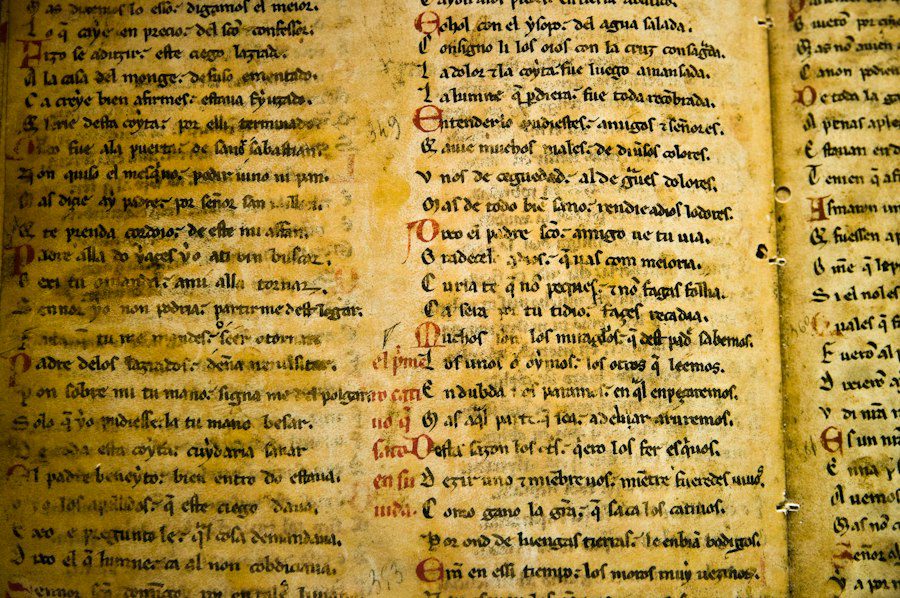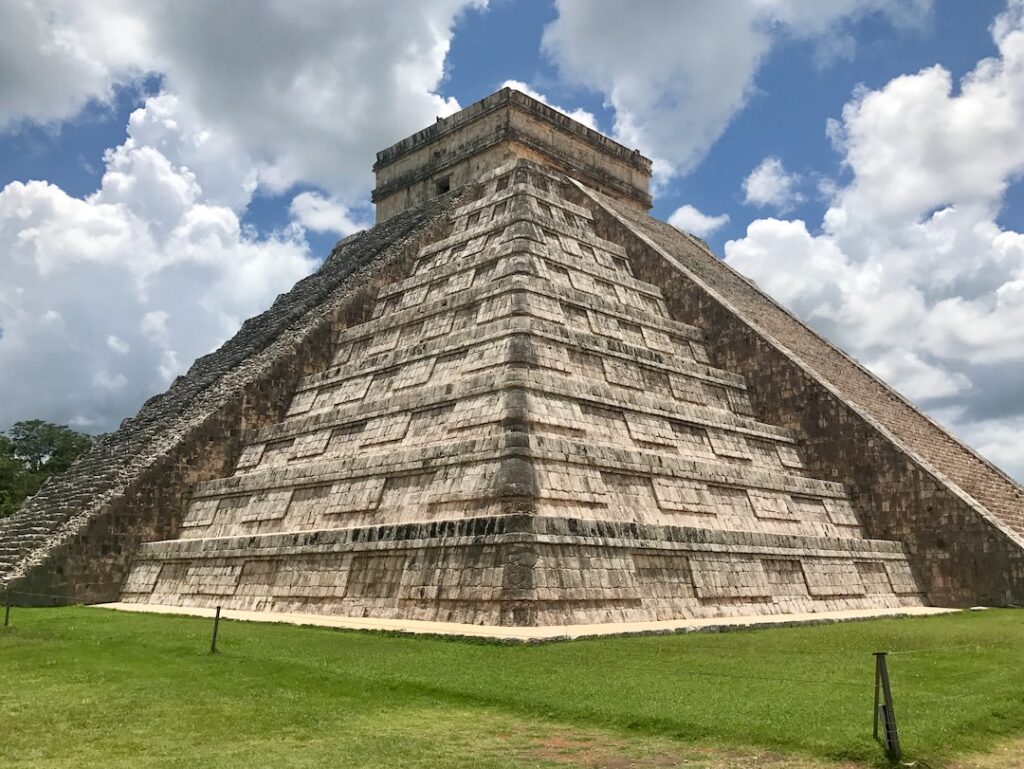The Epigraphic Mayan Language provides invaluable insight into the culture, religion, and history of the Mayan civilization. Through the decipherment of Mayan hieroglyphs, researchers have been able to uncover a wealth of information about Mayan society, including their political structure, religious beliefs, and daily life. For example, epigraphic research has revealed details about Mayan rulers, their dynasties, and their relationships with neighboring city-states.
One of the most significant discoveries made through epigraphic Mayan language research is the understanding of the Mayan calendar system. The Mayans were skilled astronomers and developed a highly accurate calendar that was based on complex mathematical calculations. Through the decipherment of Mayan hieroglyphs, researchers have been able to understand how the calendar was used and its significance in Mayan society.

The History of Epigraphic Mayan Language Decipherment
The decipherment of the Epigraphic Mayan Language has been a long and challenging process that has spanned several centuries. Early attempts to decipher the language were made by Spanish colonizers in the 16th century, but it wasn’t until the 20th century that significant breakthroughs were made.
In the 1950s, Russian linguist Yuri Knorozov made a major breakthrough in deciphering the Mayan script. He proposed that the Mayan hieroglyphs were a combination of phonetic and logographic elements, similar to ancient Egyptian hieroglyphs. This breakthrough paved the way for further research and decipherment of the language.
Since then, scholars from around the world have contributed to the decipherment of the Epigraphic Mayan Language. Today, while much progress has been made, there are still many aspects of the language that remain undeciphered or poorly understood.
The Role of Epigraphic Mayan Language in Mayan Society
The Epigraphic Mayan Language played a crucial role in Mayan society. It was primarily used by the ruling elite, including kings, priests, and scribes. These individuals were highly literate and used the language to record historical events, religious rituals, and astronomical observations.
Literacy was highly valued in Mayan culture, and those who could read and write were considered to be part of the elite class. The ability to understand and interpret the Epigraphic Mayan Language was a mark of prestige and power.
The Structure and Characteristics of Epigraphic Mayan Language
| Metrics | Data |
|---|---|
| Number of Epigraphic Mayan Texts | Over 10,000 |
| Time Period | 300 BC – 1500 AD |
| Importance of Epigraphic Mayan Language | Key to understanding Mayan history, religion, and culture |
| Epigraphic Mayan Language Usage | Used in inscriptions on monuments, stelae, pottery, and books |
| Epigraphic Mayan Language Decipherment | Deciphered in the 20th century by scholars such as Tatiana Proskouriakoff and Yuri Knorozov |
| Epigraphic Mayan Language Legacy | Continues to be studied and used in modern Mayan communities |
The Epigraphic Mayan Language is a highly complex language with a unique grammar and syntax. It is an agglutinative language, which means that words are formed by adding affixes to a root word. This allows for a great deal of flexibility in word formation and allows for the creation of complex sentences.
One of the unique features of the Epigraphic Mayan Language is its use of verb morphology. Verbs in Mayan are highly inflected and can convey a wide range of information, including tense, aspect, mood, and subject agreement.
The Use of Glyphs in Epigraphic Mayan Language
The writing system used in the Epigraphic Mayan Language is based on glyphs, which are pictorial representations of words or concepts. The Mayans used a combination of logograms, which represent whole words or ideas, and phonetic signs, which represent individual sounds.
Glyphs were typically carved into stone monuments, such as stelae or temple walls. They were also used in codices, which were folded bark-paper books that contained religious and historical texts.
The significance of glyphs in Mayan culture cannot be overstated. They were not only used for recording historical events and religious rituals but also for artistic expression. Mayan art often featured intricate glyphic designs, which were used to convey meaning and symbolism.
The Significance of Epigraphic Mayan Language in Mayan Art and Architecture

The Epigraphic Mayan Language is intricately woven into the art and architecture of the Mayan civilization. Many Mayan structures, such as temples and palaces, are adorned with hieroglyphic inscriptions that provide information about the purpose of the building, the ruler who commissioned it, and the religious significance of the site.
One notable example of Mayan architecture featuring epigraphic Mayan language is the Temple of the Inscriptions in Palenque, Mexico. This temple is adorned with hieroglyphic inscriptions that tell the story of the city’s founding and the life of its ruler, Pakal the Great.
Mayan artwork also often features epigraphic Mayan language. Sculptures, pottery, and murals are often decorated with glyphs that convey meaning and symbolism. These artworks provide valuable insights into Mayan religious beliefs, mythology, and daily life.
The Challenges of Deciphering Epigraphic Mayan Language
Deciphering the Epigraphic Mayan Language has been a challenging task due to several factors. One of the main challenges is the lack of a bilingual text or a Rosetta Stone-like artifact that would provide a direct translation between Mayan hieroglyphs and another known language.
Another challenge is the sheer complexity of the language. The Epigraphic Mayan Language has a large number of glyphs, each with multiple possible meanings. This makes it difficult to determine the correct interpretation of a given glyph in a particular context.
Furthermore, the Mayan script underwent changes over time, with different regions and time periods using slightly different variations of the script. This adds an additional layer of complexity to the decipherment process.
The Contributions of Epigraphic Mayan Language to Modern Linguistics
The Epigraphic Mayan Language has made significant contributions to the field of linguistics. Its unique grammar and syntax have challenged traditional linguistic theories and provided new insights into language structure and evolution.
One of the most significant contributions of the Epigraphic Mayan Language to linguistics is its use of verb morphology. The highly inflected nature of Mayan verbs has led to new theories about how languages can convey complex information through verb forms.
The Epigraphic Mayan Language has also provided valuable data for comparative linguistics, allowing researchers to make connections between Mayan and other Mesoamerican languages. This has led to a better understanding of the linguistic diversity in the region and the historical relationships between different language families.
The Future of Epigraphic Mayan Language Research and Discoveries

Despite significant progress in deciphering the Epigraphic Mayan Language, there is still much work to be done. Many aspects of the language remain undeciphered or poorly understood, and new discoveries are being made all the time.
Current research in epigraphic Mayan language focuses on refining existing translations, deciphering previously unknown texts, and exploring new methods for analyzing and interpreting Mayan hieroglyphs. Advances in technology, such as high-resolution imaging and computer-assisted analysis, are also aiding in the decipherment process.
Continued research in epigraphic Mayan language is crucial for preserving this ancient language and unlocking the secrets of the Mayan civilization. By understanding the language, we can gain a deeper appreciation for Mayan culture, history, and achievements.
In conclusion, the Epigraphic Mayan Language is a fascinating and significant language that provides invaluable insights into the Mayan civilization. Through the decipherment of Mayan hieroglyphs, researchers have been able to uncover a wealth of information about Mayan culture, religion, and history. While much progress has been made in deciphering the language, there is still much work to be done. Continued research and preservation of the Epigraphic Mayan Language are essential for understanding and appreciating this ancient civilization.
If you’re interested in learning more about the Epigraphic Mayan Language, you might also find this article on “Unlocking the Mysteries of Venetic Language: A Fascinating Journey into an Ancient Tongue” intriguing. It delves into the exploration of an ancient language and the challenges faced in deciphering its meaning. Discover how linguists and researchers unravel the secrets of Venetic and gain insights into the fascinating world of ancient languages. Read more
FAQs
What is Epigraphic Mayan Language?
Epigraphic Mayan Language refers to the writing system used by the ancient Maya civilization to record their language and history. It is a complex system of hieroglyphs that was used from around 300 BCE to the Spanish conquest in the 16th century.
How was deciphered?
The decipherment of Epigraphic Mayan Language was a long and complex process that involved the work of many scholars over several decades. The breakthrough came in the 1950s and 60s when a number of key inscriptions were deciphered, allowing scholars to begin to understand the grammar and syntax of the language.
What kind of information can be found in inscriptions?
Epigraphic Mayan inscriptions contain a wealth of information about the history, culture, and religion of the ancient Maya civilization. They record the names and deeds of rulers, the dates of important events, and the rituals and ceremonies that were central to Maya life.
Where are inscriptions found?
Epigraphic Mayan inscriptions are found throughout the Maya region, which includes parts of Mexico, Guatemala, Belize, Honduras, and El Salvador. They are found on a variety of surfaces, including stone monuments, stelae, and pottery.
What is the significance ?
Epigraphic Mayan Language is significant because it provides a window into the history and culture of one of the most important civilizations of the ancient world. It has allowed scholars to gain a deeper understanding of Maya society, religion, and politics, and has helped to dispel many of the myths and misconceptions that have surrounded the Maya for centuries.

 Afrikaans
Afrikaans Albanian
Albanian Amharic
Amharic Arabic
Arabic Armenian
Armenian Azerbaijani
Azerbaijani Basque
Basque Belarusian
Belarusian Bengali
Bengali Bosnian
Bosnian Bulgarian
Bulgarian Catalan
Catalan Cebuano
Cebuano Chichewa
Chichewa Chinese (Simplified)
Chinese (Simplified) Chinese (Traditional)
Chinese (Traditional) Corsican
Corsican Croatian
Croatian Czech
Czech Danish
Danish Dutch
Dutch English
English Esperanto
Esperanto Estonian
Estonian Filipino
Filipino Finnish
Finnish French
French Frisian
Frisian Galician
Galician Georgian
Georgian German
German Greek
Greek Gujarati
Gujarati Haitian Creole
Haitian Creole Hausa
Hausa Hawaiian
Hawaiian Hebrew
Hebrew Hindi
Hindi Hmong
Hmong Hungarian
Hungarian Icelandic
Icelandic Igbo
Igbo Indonesian
Indonesian Irish
Irish Italian
Italian Japanese
Japanese Javanese
Javanese Kannada
Kannada Kazakh
Kazakh Khmer
Khmer Korean
Korean Kurdish (Kurmanji)
Kurdish (Kurmanji) Kyrgyz
Kyrgyz Lao
Lao Latin
Latin Latvian
Latvian Lithuanian
Lithuanian Luxembourgish
Luxembourgish Macedonian
Macedonian Malagasy
Malagasy Malay
Malay Malayalam
Malayalam Maltese
Maltese Maori
Maori Marathi
Marathi Mongolian
Mongolian Myanmar (Burmese)
Myanmar (Burmese) Nepali
Nepali Norwegian
Norwegian Pashto
Pashto Persian
Persian Portuguese
Portuguese Punjabi
Punjabi Romanian
Romanian Russian
Russian Polish
Polish Samoan
Samoan Scottish Gaelic
Scottish Gaelic Serbian
Serbian Sesotho
Sesotho Shona
Shona Sindhi
Sindhi Sinhala
Sinhala Slovak
Slovak Slovenian
Slovenian Somali
Somali Spanish
Spanish Sundanese
Sundanese Swahili
Swahili Swedish
Swedish Tamil
Tamil Tajik
Tajik Telugu
Telugu Turkish
Turkish Ukrainian
Ukrainian Urdu
Urdu Uzbek
Uzbek Thai
Thai Vietnamese
Vietnamese Welsh
Welsh Xhosa
Xhosa Yiddish
Yiddish Yoruba
Yoruba Zulu
Zulu